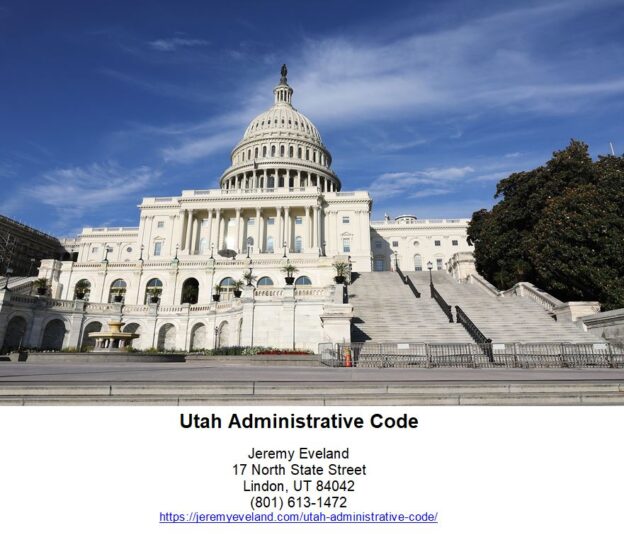Plea bargaining is a crucial aspect of the criminal justice system that allows defendants to negotiate with prosecutors in order to reach a favorable resolution to their case. This legal process involves the defendant agreeing to plead guilty to a lesser charge or accepting a reduced sentence in exchange for providing valuable information, cooperating with law enforcement, or demonstrating remorse. As a criminal defense attorney specializing in representing businesses and business owners, I understand the complexities and nuances of plea bargaining, and can guide you through this intricate process. Whether you are facing criminal charges or want to explore your legal options, contacting me for a consultation could be the first step towards securing a successful outcome.
Plea Bargaining
Plea bargaining is a crucial aspect of criminal law that involves negotiations between the prosecution and the defendant. This process allows both parties to reach a mutually beneficial agreement, resulting in a guilty plea in exchange for certain concessions from the prosecution. It is a widely used tool in the criminal justice system and plays a pivotal role in ensuring the efficient administration of justice.

Definition of Plea Bargaining
Plea bargaining refers to the negotiation process between the prosecution and the defendant, facilitated with the assistance of their respective legal counsel. It involves the resolution of criminal charges through an agreement, usually resulting in a guilty plea from the defendant. In exchange for pleading guilty, the defendant receives certain benefits, such as a reduction in charges or a recommended lenient sentence. The objective of plea bargaining is to expedite the legal process, achieve a fair outcome, and allocate limited resources effectively.
Purpose of Plea Bargaining
The primary purpose of plea bargaining is to streamline the criminal justice system by avoiding lengthy trials and reducing the burden on courts. Plea bargaining not only saves time but also enables the allocation of resources to more complex and serious cases. Additionally, plea bargaining allows the prosecution to secure convictions while avoiding potential risks associated with going to trial, including the possibility of acquittal or a more lenient sentence. For defendants, plea bargaining can result in a reduced sentence, a lesser charge, or the dismissal of certain charges altogether.
Benefits of Plea Bargaining
Plea bargaining offers several benefits for both the prosecution and the defendant. For the prosecution, it ensures a higher conviction rate and faster resolution of cases, allowing them to focus on other pending matters. By cooperating with the defense, prosecutors can also obtain critical information or assistance in ongoing investigations. For defendants, plea bargaining provides an opportunity to negotiate a more favorable outcome by avoiding the uncertainty and potential consequences of a trial. It allows for potential sentence reductions, the dismissal of certain charges, or the opportunity to plead to a lesser offense.
Types of Plea Bargaining
There are various types of plea bargaining that can be employed, depending on the jurisdiction and the specific circumstances of the case. The most common types include charge bargaining, sentence bargaining, and count bargaining.
-
Charge Bargaining: In charge bargaining, the defendant agrees to plead guilty to a less severe charge in exchange for having more serious charges dropped. For example, a defendant facing first-degree murder charges may agree to plead guilty to manslaughter instead.
-
Sentence Bargaining: Sentence bargaining involves negotiations to secure a reduced sentence or a specific sentence recommendation in exchange for the defendant’s guilty plea. This type of plea bargaining is often employed when the prosecution acknowledges weaknesses in their case or when mitigating factors are present.
-
Count Bargaining: Count bargaining occurs when the defendant pleads guilty to some charges while the prosecution drops or reduces other charges. This allows the defendant to face a lesser number of charges, potentially resulting in a more lenient sentence.

Process of Plea Bargaining
The plea bargaining process typically begins with discussions between the prosecution and the defense counsel. Both parties exchange information and assess the strengths and weaknesses of their respective cases. The defense evaluates the evidence against the defendant, identifies potential defenses, and assesses the likelihood of success at trial. Simultaneously, the prosecution considers the available evidence, witnesses, and potential challenges that may arise during trial.
Once negotiations commence, the defense counsel presents arguments, evidence, and mitigating factors to persuade the prosecution to offer a favorable plea agreement. The prosecution, in turn, evaluates the defense’s arguments and may counteroffer with a different arrangement. Throughout the negotiation process, both parties may engage in back-and-forth discussions until an agreement is reached, or they may ultimately decide to proceed to trial if an acceptable agreement cannot be reached.
Factors Considered in Plea Bargaining
During plea bargaining, numerous factors are taken into account by both the prosecution and the defense. These factors may vary depending on the jurisdiction and the specific circumstances of the case. Common factors include:
-
Strength of the Evidence: The strength of the evidence against the defendant plays a significant role in plea bargaining. If the prosecution has strong evidence, it may be more inclined to offer a less favorable plea agreement.
-
Defendant’s Criminal History: The defendant’s criminal history, including prior convictions or involvement in similar offenses, can influence the prosecution’s willingness to negotiate a plea agreement.
-
Willingness to Cooperate: Defendants who are willing to cooperate with law enforcement, provide information, or testify against co-defendants may receive more favorable plea offers.
-
Seriousness of the Charge: The severity of the charges faced by the defendant can impact the outcome of plea negotiations. More serious offenses may result in less lenient plea offers from the prosecution.
Challenges in Plea Bargaining
While plea bargaining offers numerous benefits, it is not without challenges. One significant challenge is ensuring that the negotiated agreement is fair and just for all parties involved. The defense must carefully evaluate the potential consequences of accepting a plea deal, such as the long-term impact on the defendant’s record or the collateral consequences of a conviction.
Another challenge lies in striking the delicate balance between efficiency and justice. Plea bargaining, when used excessively, may create a perception of injustice by compromising the trial process and potentially pressuring defendants into pleading guilty, even in circumstances where they may be innocent. Therefore, it is essential to strike a balance that upholds the principles of justice while acknowledging the practicalities of the legal system.
Criticism of Plea Bargaining
Plea bargaining has faced criticism from various quarters. Some argue that it allows perpetrators of crimes to receive lenient sentences, potentially undermining public safety and the deterrent effect of the criminal justice system. Critics also contend that plea bargaining may result in innocent individuals pleading guilty to crimes they did not commit due to the pressure to accept a deal rather than face the risk of harsher penalties at trial.
Additionally, concerns have been raised regarding the potential for racial or socioeconomic disparities in plea bargaining outcomes. Without careful oversight and robust policies, there is a risk of unfair plea agreements that disproportionately impact certain communities or individuals.

Key Considerations for Defendants in Plea Bargaining
For defendants considering plea bargaining, several key considerations should be kept in mind:
-
Seek Legal Counsel: It is crucial to consult with an experienced defense attorney who can guide you through the plea bargaining process and protect your rights.
-
Understand the Consequences: Assess the potential consequences of accepting a plea agreement, including the impact on your criminal record, employment prospects, and personal life.
-
Evaluate the Strength of the Case: Consider the strength of the evidence against you and the likelihood of success at trial. This assessment will help you make an informed decision about accepting a plea agreement.
-
Mitigating Factors and Defense Strategies: Identify any mitigating factors or potential defenses that may strengthen your bargaining position. Discuss these with your attorney to present a persuasive case during negotiations.
-
Consider Collateral Consequences: Be aware of the potential collateral consequences of a conviction, such as loss of professional licenses or immigration implications. Assess how accepting a plea agreement may impact these aspects of your life.
Effective Negotiation Strategies in Plea Bargaining
Negotiating a favorable plea agreement requires effective strategies and strong advocacy. Here are some techniques employed by defense attorneys during plea bargaining:
-
Thorough Case Preparation: Conduct a meticulous review of the evidence, identifying weaknesses in the prosecution’s case and uncovering defense strategies that can be leveraged during negotiations.
-
Present Mitigating Factors: Highlight any mitigating factors, such as the defendant’s good character, lack of criminal history, strong community ties, or evidence of rehabilitation. Emphasize these factors to argue for a more lenient outcome.
-
Demonstrate Weaknesses in the Prosecution’s Case: Present a strong defense by challenging the prosecution’s evidence, witness credibility, or legal arguments. By showcasing the weaknesses in their case, you can negotiate for a more favorable plea agreement.
-
Explore Alternatives to Conviction: Advocate for alternatives to conviction, such as diversion programs or community service, that can serve the interest of justice without imposing severe penalties on the defendant.
-
Maintain Open Communication: Establish a constructive and respectful rapport with the prosecution throughout the negotiation process. Open lines of communication can lead to better outcomes and potential concessions.
By employing these effective negotiation strategies, defense attorneys can maximize the potential benefits of plea bargaining for their clients and secure a more favorable resolution to criminal cases.
FAQs:
-
What happens if I refuse to accept a plea deal?
- If you refuse to accept a plea deal, your case will proceed to trial. At trial, the prosecution must prove your guilt beyond a reasonable doubt. However, by refusing a plea deal, you face the risk of potentially harsher penalties if found guilty.
-
Can I negotiate the terms of a plea deal with the prosecution?
- Yes, negotiation is a fundamental aspect of the plea bargaining process. Your defense attorney will engage in discussions with the prosecution to reach a mutually acceptable agreement.
-
Can I change my mind after accepting a plea deal?
- Once you have accepted a plea deal and the court has accepted your guilty plea, it is challenging to change your mind. However, there are limited circumstances where it may be possible to withdraw a plea, such as if there was a lack of understanding or coercion.
-
Will a plea bargain result in a criminal record?
- Yes, accepting a plea agreement typically results in a criminal conviction. However, the specific details of the conviction, such as the charges and sentencing, may be different from what you would have faced if the case had gone to trial.
-
Do all criminal cases involve plea bargaining?
- No, not all criminal cases involve plea bargaining. Some cases proceed to trial without any negotiation attempts, especially if the prosecution and defense have mutually irreconcilable positions or if the defendant firmly believes in their innocence.



















